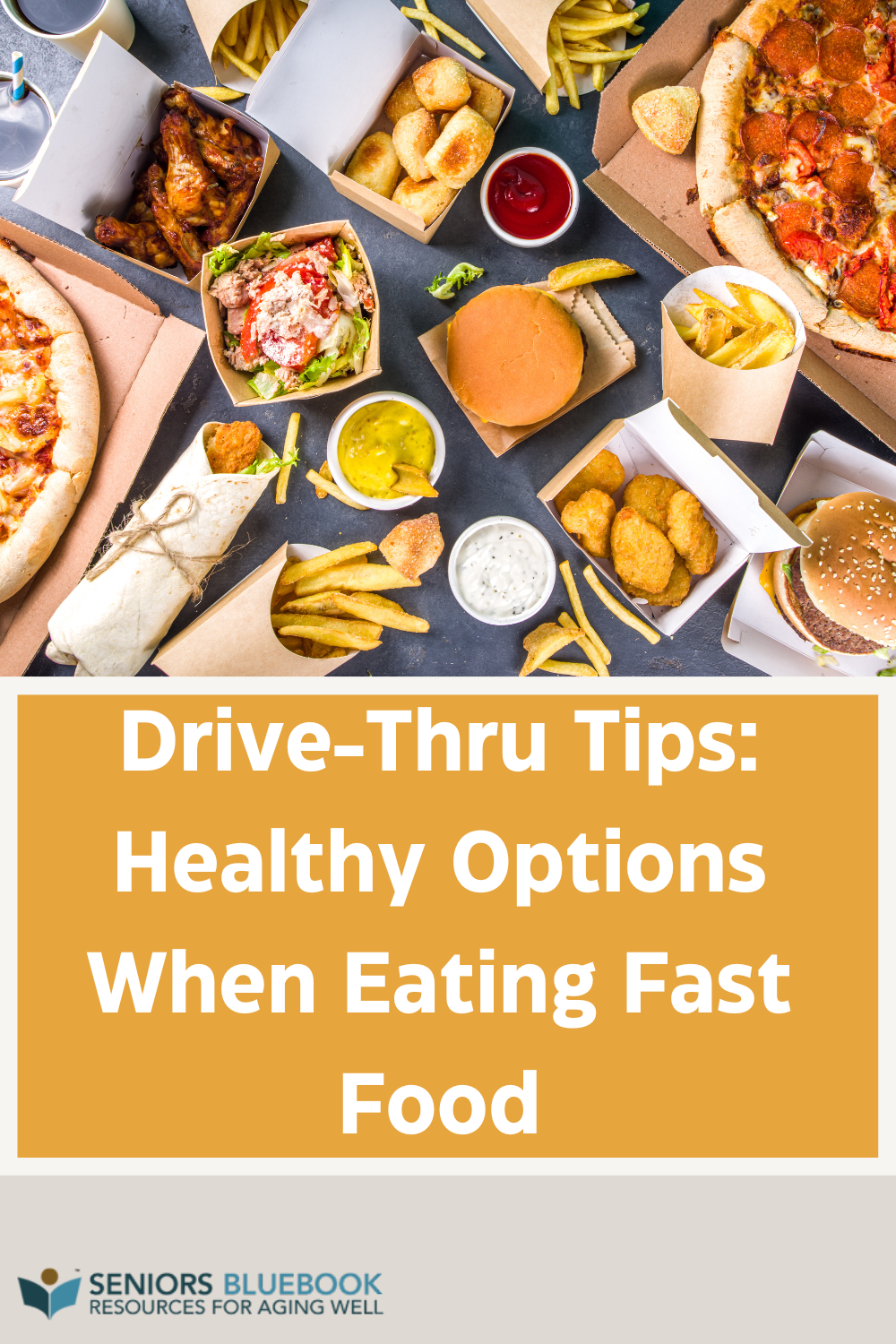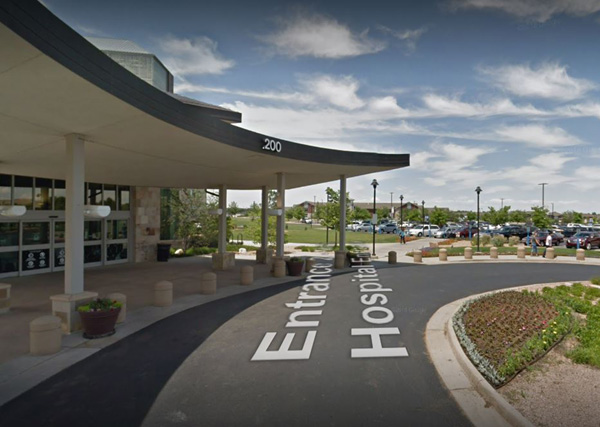Drive-Thru Tips: Healthy Options When Eating Fast Food
Intermountain Health Good Samaritan Hospital
For more information about the author, click to view their website: Good Samaritan Medical Center - Intermountain Healthcare
Apr 27, 2023
Colorado - Boulder County
It’s late, after work, and you’ve had a long day. You’re dreading going home and cooking for your family when you suddenly see a golden sign above. Those arches have never looked so good, and before you know it, you’re pulling into the McDonalds drive through.
But maybe biting into that Big Mac doesn’t feel as good as you thought it would. This is because many associate fast foods with guilt. In fact, a recent study suggests guilt is the driving force behind choosing not to eat it. But what if you can eat it in a healthy way?
There are many healthy options in popular fast-food chains. Kelly Elliot, a Registered Dietitian Nutritionist at Saint Joseph’s Weight Loss Surgery Center, helped outline tips for the guilt-free fast-food experience.
Look for healthier options on the menu
Before you roll your eyes, let us explain. Starting with beverages, avoid the temptation to get a soda and opt for an unsweetened iced tea, coffee, sugar free lemonade, or water. When it comes to your entree, choose a salad, grilled chicken, or maybe a thin crust pizza with veggies.
“People can actually ask fast food restaurants for a nutrition pamphlet,” said Kelly. “Try taking ownership and looking at the calories in the menu, maybe even before you go.”
For a healthier option, consider:
Chick-Fil-A Grilled Chicken Sandwich

- Calories: 380
- Cholesterol: 75mg
- Total fat: 12g
- Carbohydrates: 43g
- Protein: 28g
- Sodium: 760mg
Watch the portion sizes
Fast food portions are often much larger than what you would normally eat at home. In fact, the average fast-food meal is between 1200 - 1500 calories. To avoid overeating, try ordering smaller portions, split a meal with a friend, or eat mindfully. Maybe skip the sides and stick to just the main dish.
“People are geared towards eating whatever fast-food portion is given to us. We’re not asking ourselves if we’re full halfway through,” said Kelly.
She suggested dividing your food if possible and wrapping one half up before eating. “Ask yourself if you can just eat half and save that other half for later, and that’s cutting the calories by 50 percent.”
For a smaller portion size, consider:
Wendy’s Chili (Large)

- Calories: 340
- Cholesterol: 30mg
- Total fat : 15g
- Carbohydrates: 31g
- Protein: 22g
- Sodium: 1270mg
Customize your order
Fast food restaurants allow you to customize your order, so take advantage of that! Ask for no cheese or sauce, replace beef with grilled chicken or turkey, and choose vegetables instead of fries. You can even ask for a whole-grain bun or wrap instead of a white bun. Get creative with substitutions, and design for nutrition!
Kelly advised customizing bowls, a popular fast food restaurant option, and opting for lettuce instead of white rice. “Go heavy on lean meat, veggies, and beans,” she added. She also proposed choosing a side salad or fruit cup, instead of french fries.
For a customized healthy option, consider:
Taco Bell Burrito Supreme (Subbed chicken for beef, and ordered ‘Fresco Style,’ which replaces mayo, cheese, and sour cream with fresh tomatoes)

- Calories: 325
- Cholesterol: 25mg
- Total fat: 7g
- Total Carbohydrates: 48g
- Protein: 17g
- Sodium: 1080mg
Be aware of hidden calories
Remember what we said for number one? There’s a slight exception. Some fast-food items seem healthy but are actually high in calories and fat. For example, a salad with a lot of cheese, croutons, and dressing can be just as unhealthy as a burger and fries.
“Salads can be funny. Sometimes a taco salad in a fried bowl is one of the highest calorie things on the menu,” Kelly warned. “Is there a good amount of protein, are there veggies, is there fruit? Or do you see a lot of bacon bits and croutons?”
She also cautioned against condiments. “It’s an area hardly anybody thinks about. For example, one Chick-Fil-A sauce is 140 calories, and if you’re eating two packets, you’re adding 280 calories to your meal.”
For a salad without hidden calories, consider:
Jack In the Box Grilled Chicken Salad

- Calories: 250
- Cholesterol: 70mg
- Total fat: 9g
- Total Carbohydrates: 14g
- Protein: 28g
- Sodium: 660mg
Don't make fast food a regular habit
While it's possible to eat healthy at fast food restaurants, it's not something you should do on a regular basis. Fast food is often high in additives, sodium, fat, and calories, and can contribute to health problems if consumed too often.
“When we eat highly processed foods, we don’t get nourishment,” said Kelly, adding that our body might not recognize processed meals. “And then we’re still hungry an hour later, even after eating 1200 calories, because our body didn’t get what it needed.”
Choosing healthy options when you can, and making smart decisions about moderation is crucial.
For a treat in moderation, consider:
McDonalds Vanilla Ice Cream Cone

- Calories: 250
- Cholesterol: 25mg
- Total fat: 6g
- Total Carbohydrates: 40g
- Protein: 6g
- Sodium: 150mg
The next time you find yourself pulling into a drive-through, skip the guilt and opt for the healthier option. You might be surprised how good it feels to enjoy a fast-food meal without compromising your health.
“Fast food gets a bad rap,” said Kelly. “But I think you can go just about anywhere and make a good choice.”
If you have any questions, please call, Good Samaritan Medical Center - Intermountain Healthcare at 303-689-4000.
- To view the original version of this article visit www.sclhealth.org/blog/2023/03/drive-thru-tips-healthy-options-when-eating-fast-food/
- Seniors Blue Book was not involved in the creation of this content.
Other Articles You May Like
Mastering your health after 50
As you get older, health screenings and checkups become a more vital part of your overall well-being. Knowing which screenings to get after 50, and how often, will support early detection and effective treatment, while also helping you stay proactive about your health. To make being proactive even easier, weve created a handy preventive care guide filled with quick health tips and the information you need to stay on top of your health screenings. Click below to download your free health screening guide today -https://transformingage.org/mastering-your-health-after-50/- Call us today to learn more 720-505-5133.
Maintaining Independence with the Right Summer Support Systems
Supporting independence is one of the best things we can do for the older adults in our lives. The summer months, filled with events and activities, offer great opportunities to revisit how were helping seniors stay empowered, without compromising safety.What Independence Really Looks LikeIt doesnt mean doing everything alone it means having the freedom to make choices, engage in meaningful routines, and feel in control. From choosing what to eat to deciding when to go for a walk, independence is deeply tied to dignity and mental wellness.Tools That Support Senior IndependencePersonal Emergency Response Systems (PERS): Allow seniors to summon help at the touch of a buttonMedication Dispensers: Help track daily doses and prevent missed or doubled medsVoice-Controlled Smart Devices: Can assist with reminders, music, and communicationTransportation Services: Ride-share apps or senior transit services can make errands and outings easierProfessional Services Can Help, TooIn-home care aides can support with personal care or light housekeepingMeal delivery services ensure regular nutrition without the burden of cookingDay programs or hobby groups promote mental stimulation and social interactionResources to Explore Support Options:Eldercare Locator A nationwide service connecting older adults and caregivers with trustworthy local support resources. https://eldercare.acl.gov/Public/Index.aspxBenefitsCheckUp by NCOA A free, confidential tool to help older adults find benefits and support programs. https://www.ncoa.org/benefits-checkupAARP Technology Resources for Seniors Guides for using smart home devices, tablets, and safety tech. https://www.aarp.org/home-family/personal-technology/ Summer is a season of freedom and with the right supports in place, seniors can experience that freedom in ways that enrich their health, happiness, and quality of life. Call us today to learn more, 303-957-2555.
Local Services By This Author
Intermountain Health Good Samaritan Hospital
Hospitals 200 Exempla Circle, Lafayette, Colorado, 80026Intermountain Health Good Samaritan Hospital is a community-based, acute-care hospital in Lafayette, Colorado. Intermountain Health is a nonprofit faith-based health system with hospitals in two states. At Intermountain Health Good Samaritan Hospital, we are happy to tell you about us: our compassionate caregivers, our clinical excellence, our award-winning care and even our beautiful campus. But its really all about you. Our patients and families are the center of every thought, communication and action that takes place in this healing space.
Intermountain Health Good Samaritan Hospital
Emergency Departments for Seniors 200 Exempla Circle, Lafayette, Colorado, 80026Intermountain Health Good Samaritan Hospital senior E.R. is Colorado's first E.R. facility constructed with seniors needs in mind. By implementing a philosophy of care for the geriatric patient and implementing a variety of screenings designed for the senior population, physicians hope that their senior E.R. will help lower readmission rates and reduce the risk of harmful drug interactions. In order to give excellent emergency care to seniors in our community including specialized screening and care, physicians and nurses have taken workshops in sensory appreciation and ageism to learn how to better communicate with older adults and their caregivers. The Senior ER provides a less chaotic and stressful environment for senior patients while optimizing their discharge to the most appropriate and safe environment.


